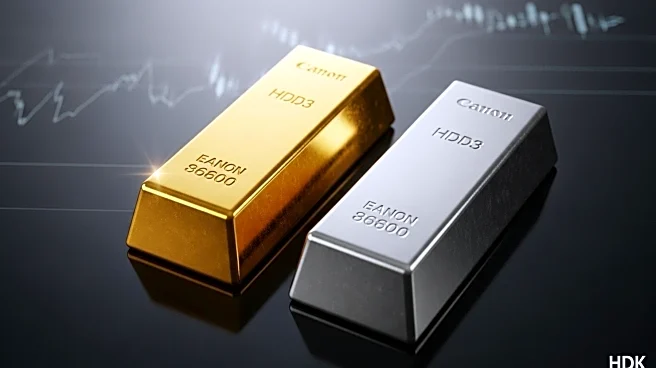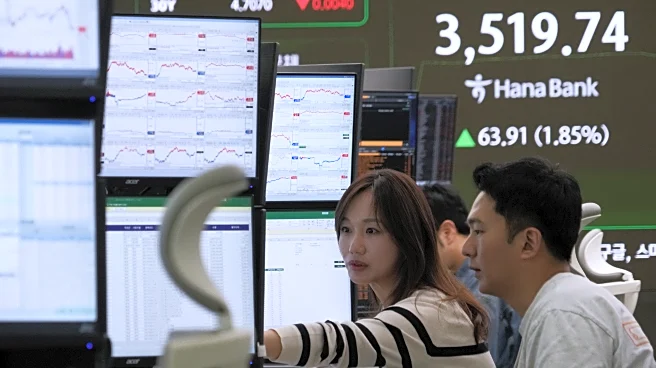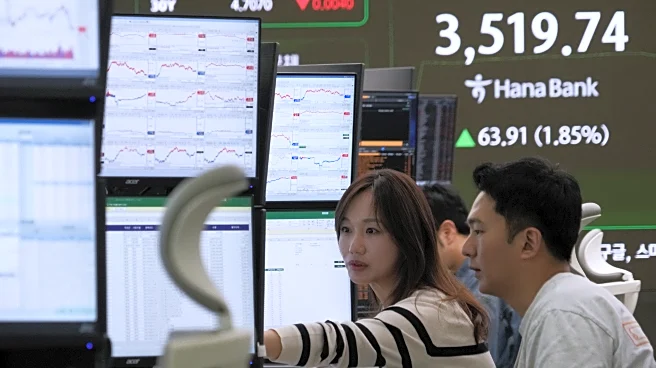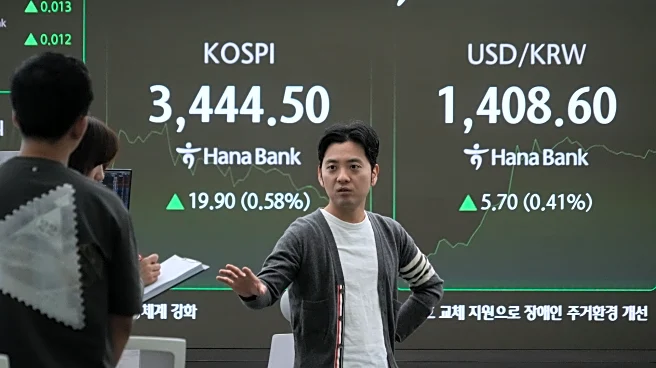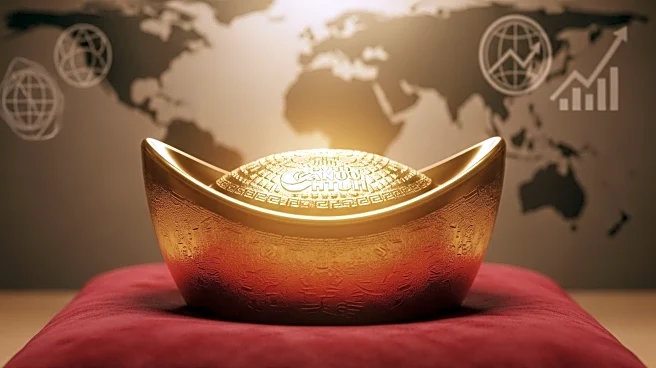What's Happening?
Gold prices have soared to a record high of $3,895 per ounce, driven by safe-haven demand amid looming U.S. political risks, including a potential government shutdown and heavy Federal Reserve rate-cut bets. Silver has also climbed to its highest level in over 14 years, with platinum and palladium experiencing significant surges. The rally is fueled by geopolitical tensions, economic uncertainty, and strong demand from India, where gold and silver imports have nearly doubled in anticipation of the Diwali festival. Analysts remain bullish, with Goldman Sachs projecting gold prices to reach $4,000 by mid-2026.
Why It's Important?
The surge in precious metal prices reflects heightened investor anxiety over U.S. political instability and economic challenges. As safe-haven assets, gold and silver provide protection against currency fluctuations and inflation, attracting institutional and retail investors. The potential government shutdown and Federal Reserve rate cuts could further destabilize markets, increasing demand for these metals. The strong demand from India underscores the cultural and economic significance of gold and silver, influencing global market dynamics.
What's Next?
Gold and silver prices are expected to continue their upward trend, with analysts predicting further gains driven by ongoing geopolitical tensions and economic uncertainties. The potential government shutdown and Federal Reserve policy decisions will be closely monitored, as they could significantly impact market sentiment and investment strategies. The strong demand from India and central bank buying are likely to support high prices, with potential for further increases as global economic conditions evolve.
Beyond the Headlines
The rally in precious metals highlights the strategic importance of these assets in times of economic and political instability. The potential government shutdown and rate cuts could lead to long-term shifts in investment patterns, affecting sectors reliant on these metals. The strong demand from India reflects cultural and economic factors that influence global market dynamics, with implications for trade and industry.


